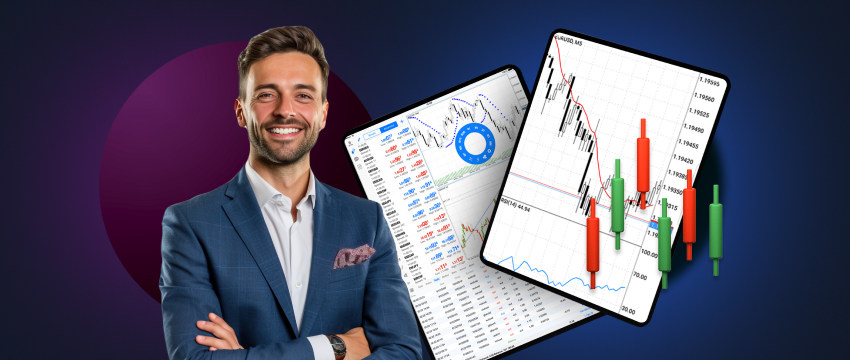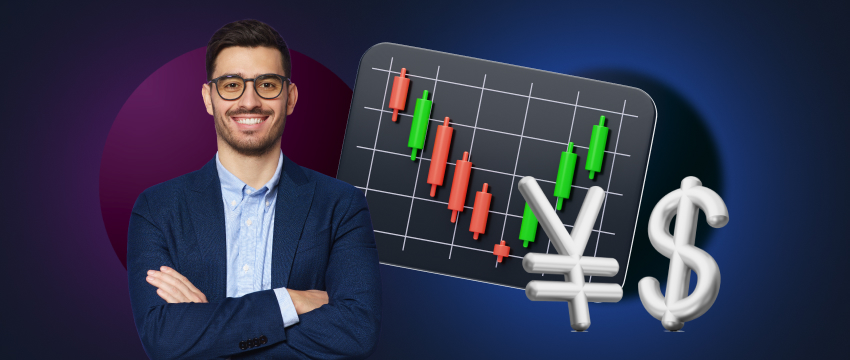For the most part, CFD trading is actually considered more cost-effective than other forms of trading. This is for several reasons, e.g., using leverage to open positions with limited capital, and increased trading opportunities to make gains. However, trading CFDs does come with drawbacks, particularly in terms of risk and the high potential for losing large sums of money. So while CFD trading is not expensive per se, losses can be incurred if not managed strategically.
Key features of Contracts for Difference (CFDs)
To properly understand CFDs, let’s talk a little more about their defining features.
1. A CFD is a financial derivative that enables a trader to speculate on the price movement of the underlying asset. In other words, CFD trading is a method of trading the value of the underlying asset as opposed to the asset itself.
2. In CFD trading, no physical ownership of the underlying asset is required. Instead, the CFD trader makes a profit on the price change of that asset, if successful.
3. CFDs are over-the-counter (OTC) products. This means they aren’t traded via a major exchange, e.g. New York Stock Exchange. Rather, they are traded via CFD brokers that organize the market demand and supply of CFDs, and who formulate CFD prices.
4.CFDs can be used for trading both bullish and bearish markets.
5. CFD markets usually have high liquidity. This allows short-term traders to enter and exit positions quickly within a particular timeframe.
6. Leverage is a primary feature of CFD trading. It allows a trader to execute trades without the obligation of paying the total cost of the position upfront.

Drawbacks of CFD trading
While CFD trading comes with obvious potential for profitable trading, it does also come substantial risk. Enough so that if not properly managed, can lead to the trader losing all their money. So what are these risks that CFD trading imposes?
1. Mismanaging your use of leverage
Although leverage creates trading opportunities that may exceed ones usual budget, mismanaging it can lead to losses exceeding your capital. In fact, leverage can totally wipe out your CFD trading account if you don’t practice prudence or fail to deploy effective risk management techniques.
2. The tendency to overtrade
Yes, overtrading is a thing. Especially in the context of CFD trading that offers a cost-efficient way to trade different markets. Combine this with the use of leverage and lower margin requirements (where applicable), falling into the trap of overtrading is highly probable.
3. Instability
The CFD market, while highly liquid, is not particularly stable and exhibits significant volatilities. Consequently, a trader lacking experience, expertise, sufficient capital, and relying heavily on leverage may face a complete loss of funds due to even minor price fluctuations.
4. Overnight costs
Those CFD traders choosing to hold positions overnight may incur additional costs such as overnight fees or financing charges.
5. Counterparty risk
Let’s not forget that a CFD is a contract entered into by a broker and a trader. The trader is thus reliant on the fact that the broker is responsible and implements proper measures to safeguard funds. This makes selecting a broker that is trustworthy and reliable all the more important to protect ones capital and minimise the danger of financial loss.
How do I get started with CFD trading?
The steps to take to start trading CFDs are relatively simple.
Step 1
Open a trading account with your preferred CFD broker. This is probably one of the most vital steps in the entire process so ensure you do your homework. Conduct some research on different traders to get an idea for who is respected amongst global traders. Aside from reading online reviews and testimonials, reach out to your trading peers in community forums to get their feedback too. Also ensure that the broker is regulated by a respectable financial authority for an added layer of peace of mind. Opening a CFD trading account is generally uncomplicated. You may be required to adhere to specific KYC criteria (e.g. identification document, proof of address, etc). To establish what you’ll need to have onhand, follow the procedure found on your broker of choice’s website.
Step 2
Once your account has been opened, you’ll need to fund it. Again, establish what funding options are offered by your broker. If, at this point, you are still undecided about how to proceed, think about opening a demo trading account and practice CFD trading with virtual funds. In this way, you avoid putting your own money at risk. Once you feel more confident about the the trading experience you’re likely to be provided by the broker, and have gained the skills required to trade CFDs, consider funding your account and proceeding to live trading.

Step 3
If at this point you still don’t have a trading plan in place, create one. A trading plan serves as the framework for how you will trade. It states your objectives so you know what you’re working towards. It sets out the predefined rules by which you will trade, and the risk management tools you’ll use to protect your money. A trading plan ultimately helps you make informed decisions to reduce the risk of losing your capital or wiping out your trading account.
Step 4
Now go on to choose a CFD market you wish to trade. There are many to pick from, be it commodities, metals, shares, EFTs, bonds, forex, and many more. You’ll have likely ensured that your broker offers the CFD/s you’re after before registering with them. Also ensure you have a robust understanding of the CFD market you intend on engaging with. Remember, CFD trading comes with many risks, you must equip yourself with as much information as possible to be able to make calculated decisions.
Step 5
At this point, you should be able to start trading. This means opening and monitoring your first position. Here you will need to decide whether to go long or short, both of which CFD trading accommodates. Once the position has moved in your favour, consider exiting the trade. Hopefully, you’ll have made your first gain. Closing a long position means selling the CFD, whereas closing a short position means buying the CFD.
Popular CFD trading strategies
There are a variety of different trading strategies once can use to trade CFDs.
Some of the most popular are day trading, news trading, hedging, position trading, swing trading, and scalping.
Day trading
Day trading involves entering and exiting a trade, with the intention to close the position at the end of the trading session. The trader’s objective is to make a profit from the underlying asset’s price movement. A day trader will consult price charts using technical analysis throughout the day to reach trading decisions.

News Trading
News trading refers to monitoring economic announcements and releases, as well as news and events, that can cause sharp price movements in the market.
Hedging
Hedging is a strategy used by traders to offset risk and adverse market movements by opening opposite positions.
Position Trading
Unlike day trading, position trading is a more long-term approach that sees traders holding onto positions for months or even years. A position trader will usually use fundamental analysis to come to a trade decision.
Swing Trading
Swing traders typically seek to capture medium-term price movements. They will commonly hold onto positions for days or weeks, riding price swings in the market.
Scalping
Scalping is probably most similar to day trading. Scalpers will open a large volume of trades frequently in a trading day. They may hold positions for a few seconds to a few minutes.
If you’ve decided that trading CFDs is a form of trading that appeals to you, consider becoming a T4Trade trader. T4Trade is a powerful broker that offers CFDs across multiple asset classes, from stocks to forex to commodities to metals, and more.
T4Trade also cares about keeping you better informed so that you make trading decisions based on proper insights and data. The broker offers a variety of educational tools that will teach you the fundamentals of entering the trading game.
Pick your favourite resource for learning, be it blogs, video, podcasts or webinars, and start expanding your knowledge. Also make use of T4Trade’s multilingual customer support team should you have any questions. They are available 24/5 via Live Chat and email to assist you.
Disclaimer: This material is for general informational and educational purposes only and should not be considered investment advice or an investment recommendation. T4Trade is not responsible for any data provided by third parties referenced or hyperlinked in this communication.




